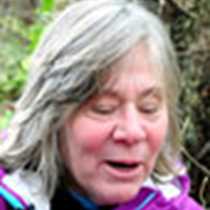Glacier Bay National Park and Preserve
Early morning fog and mist didn’t deter the sharp eyes of Naturalist Gretchen Pederson as she spotted a female black bear with two small cubs frolicking on the beach shortly after we departed the dock at Bartlett Cove with our National Park Ranger and park interpreter, Janene Driscoll for an all day excursion into this wilderness National Park that the glaciers have so recently revealed.
The low forests around park headquarters quickly gave way to rocky islets and cloud- draped mountains and just after breakfast we tucked in close to South Marble Island. Hundreds of seabirds vied for space on the rocky cliffs. Tufted Puffins pretty much stole the show, though the cliff nesting black-legged kittiwakes were by far the most outspoken. Glaucous-winged gulls ruled the tops of the hills, while the softly growling bass notes of the Steller sea lions underscored the cacophony. In the water other alcids, like pigeon guillemots and the elegant common murres, caught small silvery fish to take back to their young.
Up the bay, we cruised behind Russell Island in search of wildlife. An adult coastal brown bear walked along a grassy outcrop and in the water dark rafts of scoters fanned out along the shore. A few Kittlitz’s murrelets (a rare and special sighting for birding enthusiasts) were also spotted behind the island.
Finally, nearly fifty miles into the bay, the icy blue-white snouts of the Lamplugh and Margerie glaciers hove into view as we rounded the north end of the island. The story of Glacier Bay is centered around the rapid retreat of the glaciers that carved this magnificent place. In only 250 years, 65 miles of ice scoured rock have been unveiled, allowing scientists and researchers to study the retreat of the ice and the succession of plants and animals repopulating the land and the sea.
Lucky us, as just a few days ago, Johns Hopkins Inlet opened to summer visitors. Hundreds of harbor seals use the ice in front of this spectacular glacier for pupping, and the nursing mothers and their young are protected during this critical early stage. Captain Coughlin deftly maneuvered the National Geographic Sea Bird close to the two-hundred foot high face and mile wide marbled blue ice without disturbing the remaining seals scattered about the floating ice while we enjoyed some wonderful calving events complete with ‘white thunder’.
This place rarely fails to offer something unbelievably special. Near the carcass of a dead humpback whale, a courting pair of coastal brown bears wrestled, romped, waltzed and finally napped in the wildflowers above the rocky beach. We watched silently, spellbound by this rare sighting… What a memorable day we’ve experienced here, immersed in the magic of wilderness and wildlife!




